Tortoiseshell and calico cats, with their captivating multi-colored coats, are a delightful sight. Often confused, these patterns, while sharing similarities, each boast unique characteristics. If you’ve ever wondered about the difference between a Calico Tortoiseshell Cat and simply a tortoiseshell or calico, you’re in the right place. This article delves into the fascinating world of feline coat colors, explaining what sets these beautiful cats apart, their shared traits, and the genetics behind their distinctive looks.
Understanding Tortoiseshell Cats
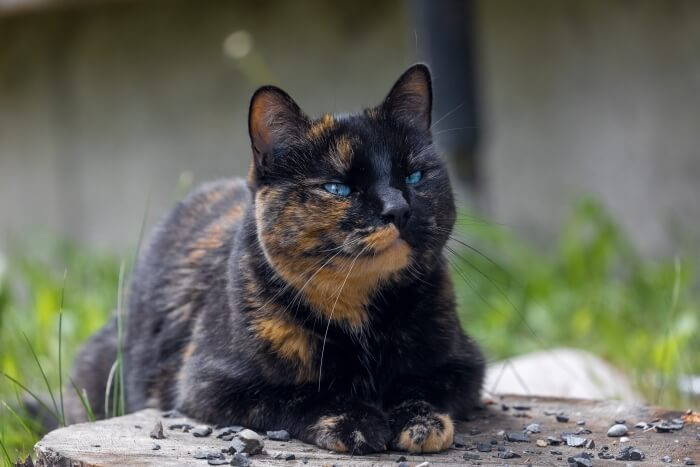 A tortoiseshell cat, showcasing its unique coat pattern characterized by a mix of various colors.
A tortoiseshell cat, showcasing its unique coat pattern characterized by a mix of various colors.
Tortoiseshell is not a breed, but rather a striking color pattern that graces cats of various breeds and mixes. Imagine the mottled shell of a tortoise – that’s the inspiration for the name. True tortoiseshell cats display a beautiful blend of two colors: typically black and orange, or their diluted versions, grey and cream. One of the most fascinating aspects of tortoiseshell cats is their strong association with the female gender. In fact, it’s an incredibly rare occurrence for a tortoiseshell cat to be male, and when it does happen, they are usually sterile.
The tortoiseshell pattern can appear in both purebred and mixed-breed cats, whether they have long or short fur. Traditional tortoiseshells feature a rich combination of deep orange and black. “Dilute” tortoiseshell cats, on the other hand, exhibit softer shades of grey and orange, instead of the bolder black and orange. Due to the nature of the tortoiseshell pattern not being breed-specific, the coloring often presents as a brindle effect, with colors intricately mixed throughout the coat.
Adding another layer of intrigue, some tortoiseshell cats display a “chimera” coat. This occurs when one side of the cat’s body is predominantly one color, while the other side showcases a different color. This split can be strikingly visible, even down the center of the face. Whether a subtle shift or a dramatic divide, the tortoiseshell cat’s coat is always a unique tapestry of dark shades like black or chocolate intermingled with vibrant ginger, red, or orange hues.
Beyond their visual appeal, tortoiseshell cats are often associated with a spirited and independent personality, affectionately known as “tortitude.” This reputation adds to their allure, making them not just beautiful but also characterful companions.
Exploring Calico Cats
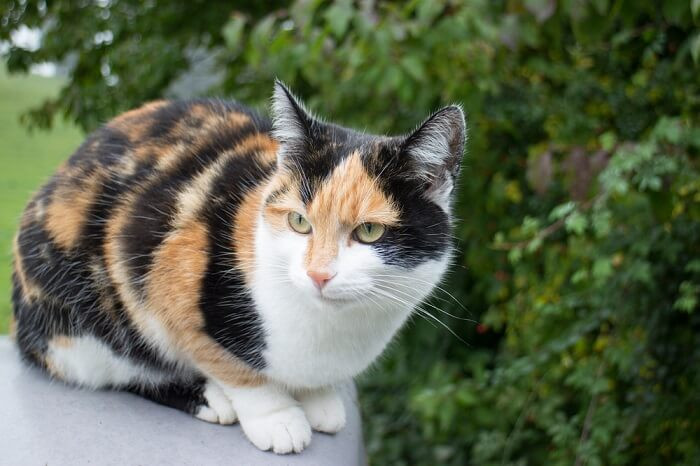 A calico cat, displaying its distinct coat pattern with a combination of white, black, and orange fur patches.
A calico cat, displaying its distinct coat pattern with a combination of white, black, and orange fur patches.
Like tortoiseshell, calico is a term describing a coat color pattern, not a cat breed. Predominantly female, calico cats are easily recognized by their tri-color coats of orange, black, and white. The beauty of the calico pattern lies in its incredible variety; each calico cat is a unique work of art, with no two patterns being exactly alike – much like human fingerprints.
Traditional calico cats are characterized by large, distinct patches of white, orange, and black, often described as piebald. “Dilute” calico cats present a softer palette, with grey replacing black in their tri-color combination. Interestingly, calico cats are also known by other names, including tortie-and-white, tricolor cats, torbie (if tabby markings are present), or piebald cats, highlighting the diverse terminology surrounding this coat pattern. The white in their coats is a crucial differentiator from tortoiseshell cats.
Key Differences: Calico Cats vs. Tortoiseshell Cats
 A cat sitting next to a clock, emphasizing the importance of spending time with your feline companion.
A cat sitting next to a clock, emphasizing the importance of spending time with your feline companion.
The most significant difference between tortoiseshell and calico cats lies in the presence of white fur. Tortoiseshell cats are bi-colored, displaying only two colors – black and orange (or grey and orange in dilute versions) – with absolutely no white fur.
Calico cats, however, always feature three colors: white, black, and orange (or white, grey, and cream in dilute calicos). This tri-color coat is due to an additional genetic factor called piebalding, which causes unpigmented, white areas to appear on the cat’s body. The extent of white can vary greatly, ranging from a predominantly white cat with small patches of color to a mostly colored cat with minimal white markings. Regardless of the distribution, the presence of white is the defining characteristic that distinguishes a calico from a tortoiseshell cat.
Shared Traits: Similarities Between Calico and Tortoiseshell Cats
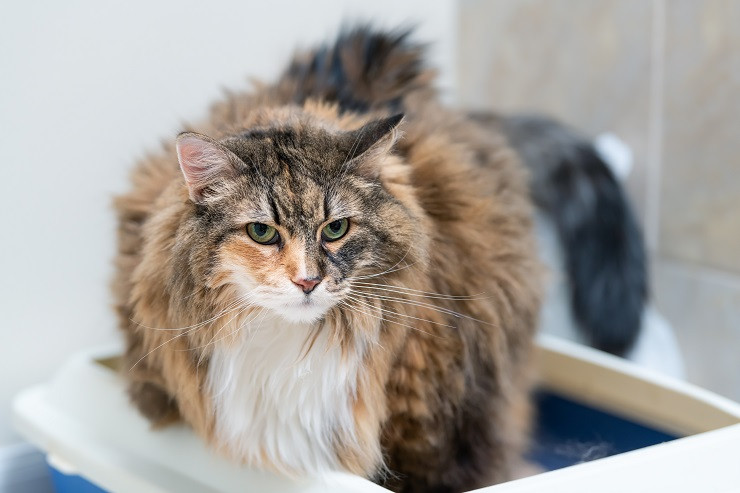 Similarities Between Tortoiseshell And Calico Cats
Similarities Between Tortoiseshell And Calico Cats
Despite their color difference, tortoiseshell and calico cats share several notable similarities, starting with their predominantly female gender. The genetic mechanism behind their distinctive coat colors is linked to the X chromosome. The black and orange color patterns in tortoiseshells, and the tri-color pattern in calicos, both require the presence of two X chromosomes. This genetic requirement is why the vast majority of both tortoiseshell and calico cats are female.
Another shared characteristic is the frequent appearance of tabby markings within their coats. A tortoiseshell or calico tabby, sometimes referred to as a “torbie” when combining tortoiseshell and tabby, exhibits the classic stripes of a tabby cat overlaid with the tortoiseshell or calico coloration. These cats may display patches or stripes of red or orange fur mixed with the tabby pattern, creating a rich and complex coat appearance.
Personality-wise, both tortoiseshell and calico cats are often described as independent and lively. While generalizations should be taken with a grain of salt, calico cats are sometimes perceived as slightly more outgoing and friendly, whereas tortoiseshell cats are often attributed with a more assertive and no-nonsense demeanor, contributing to the “tortitude” stereotype.
In terms of lifespan and care, both tortoiseshell and calico cats are quite similar. They typically have an average lifespan of around 12 to 15 years and are equally suited to indoor or outdoor living, making them popular and beloved domestic companions.
The Genetic Story: How Calico and Tortoiseshell Patterns Emerge
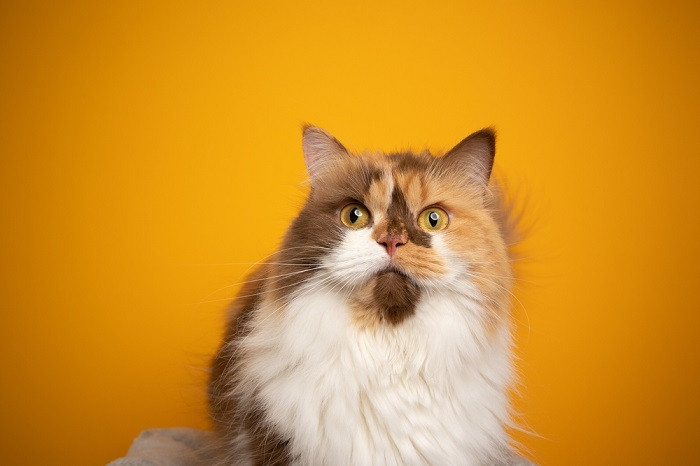 how calico and tortoiseshell cats get their pattern
how calico and tortoiseshell cats get their pattern
The fascinating coat patterns of tortoiseshell and calico cats are a result of sex-linked genetics. As mentioned, almost all tortoiseshell and calico cats are female, possessing two X chromosomes (XX). The gene responsible for orange and black fur color is located on the X chromosome. Females inherit two X chromosomes, allowing for the expression of both orange (XO) and black (XB) alleles, resulting in the mixed tortoiseshell or calico patterns. They will pass on only one X chromosome to their offspring.
Males, on the other hand, typically have one X and one Y chromosome (XY). They inherit only one X chromosome, which can carry either the orange (XO) or black (XB) allele, leading to solid orange or black coats, but not the mixed patterns. The rare occurrence of a male tortoiseshell or calico cat happens when a male cat inherits an extra X chromosome (XXY), a genetic anomaly. This XXY combination allows for the expression of both orange and black alleles, resulting in a tortoiseshell or calico male. However, these males are often sterile and may be prone to certain health issues, such as aortic valve diseases and fragile bones.
Here’s a simplified breakdown of the genetics:
- Female XO (Orange allele) + Male XO (Orange allele) = Orange offspring
- Female XO (Orange allele) + Male XB (Black allele) = Mixed orange and black pattern offspring (typically female)
- Female XB (Black allele) + Male XO (Orange allele) = Mixed orange and black pattern offspring (typically female)
- Female XB (Black allele) + Male XB (Black allele) = Black offspring
The female XX chromosome combination is standard. For a male to exhibit tortoiseshell or calico coloring, they must possess the unusual XXY chromosome makeup. The orange and black pigment gene’s location on the X chromosome is the key to understanding how these captivating coat colors arise, even in orange tabby kittens who can carry the genes for tortoiseshell or calico patterns.
Cat Breeds That Can Be Calico or Tortoiseshell
It’s crucial to remember that neither tortoiseshell nor calico is a cat breed. These terms describe coat colors and patterns that can appear in various breeds. Many breeds standards acknowledge and include these beautiful patterns.
For example, breeds like the Maine Coon and Japanese Bobtail are known to exhibit the calico coloration. While tortoiseshell and calico are not breeds themselves, their striking appearance has made them quite popular, with many people using these terms to describe the type of cat based on coat color rather than focusing on breed.
Breeds commonly seen with Tortoiseshell markings:
 tortoiseshell cat lifespan
tortoiseshell cat lifespan
Breeds often displaying Calico patterns:
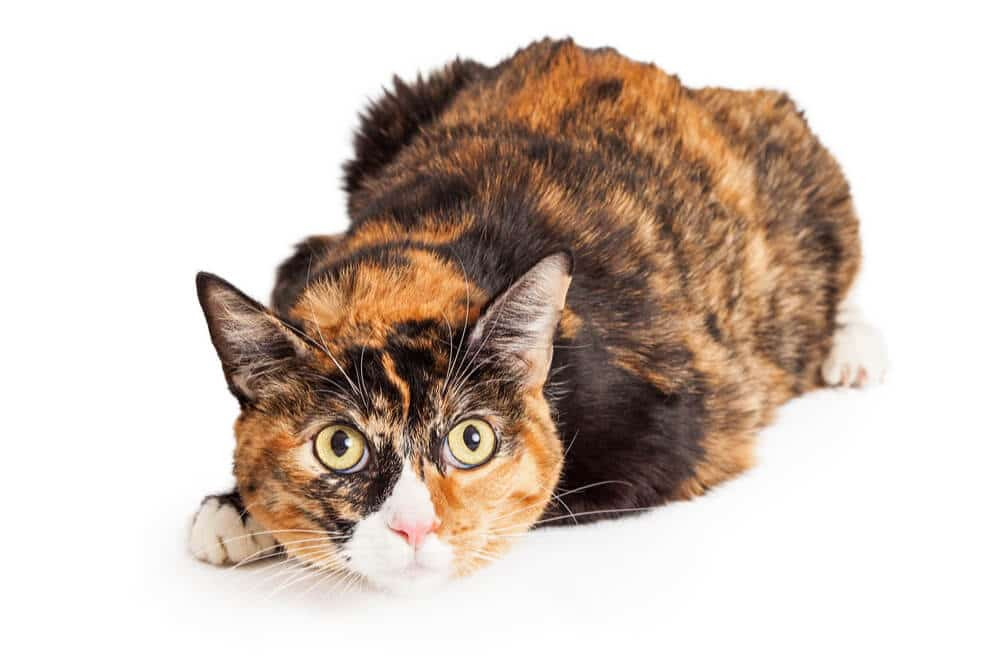 Calico cat personality
Calico cat personality
Rarity: Are Calico and Tortoiseshell Cats Uncommon?
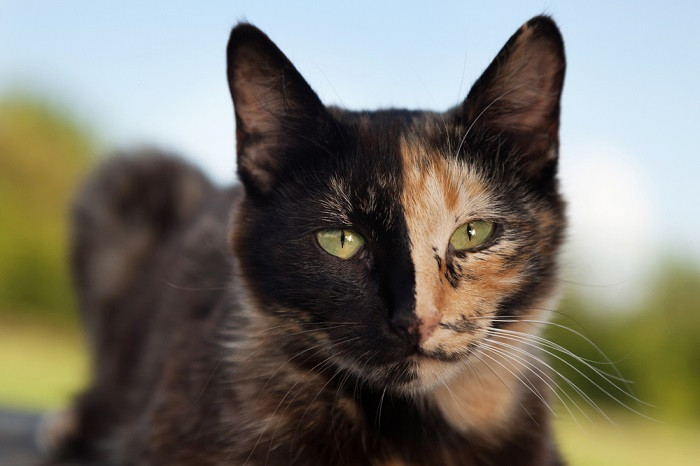 Tortoiseshell cats, showcasing the unique coat pattern characterized by a mix of various colors.
Tortoiseshell cats, showcasing the unique coat pattern characterized by a mix of various colors.
While female tortoiseshell and calico cats are not considered rare, the occurrence of male calico tortoiseshell cats is indeed a rarity. It’s estimated that only about one in every 3,000 tortoiseshell or calico cats is male.
The genetic requirements for these coat patterns, specifically needing two X chromosomes, naturally lead to a higher prevalence in females. Both the orange and black pigment genes must be present to create either a tortoiseshell or calico coat. Since females have two X chromosomes, they are much more likely to inherit both color genes. This genetic lottery makes female calico and tortoiseshell cats relatively common, while their male counterparts remain a fascinating rarity.
Final Thoughts on Calico and Tortoiseshell Cats
 A unisex tortoiseshell cat, displaying the distinctive coat pattern of this feline variety.
A unisex tortoiseshell cat, displaying the distinctive coat pattern of this feline variety.
In summary, tortoiseshell cats are bi-colored felines with coats resembling a tortoise shell, blending orange and black hues, while calico cats are tri-colored, adding white to the orange and black mix. Both terms refer to coat patterns, not breeds, and are predominantly found in female cats.
Whether you are drawn to the intricate swirl of colors in a tortoiseshell or the distinct patches of a calico, both patterns bring a unique visual charm to the feline world. And while male calico tortoiseshell cats are rare, the females of both patterns are cherished for their beauty and often, their spirited personalities. Historically, both types of cats have been considered symbols of good luck, adding another layer of mystique to these already enchanting felines.
Frequently Asked Questions
Is tortoiseshell the same as calico?
No. While both are coat color patterns, they are distinct. Calico cats have a tri-color coat of white, black, and orange-red. Tortoiseshell cats lack white and have a bi-color mottled coat of black and orange.
Can tortie cats have white on them?
No. Traditional tortoiseshell cats do not have white fur. Their coats are primarily a mix of black, red, and orange with brown undertones. Dilute tortoiseshells exhibit softer, less intense colors, and chocolate tortoiseshells have much darker fur, but white is not a component of the tortoiseshell pattern.
